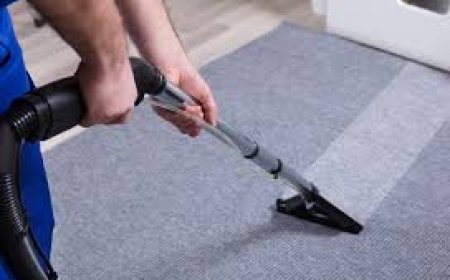How Internal Links Can Help Your WooCommerce SEO
For WooCommerce store owners, investing time in creating a thoughtful internal linking strategy can yield long-term benefits.

Driving traffic and increasing conversions in the fiercely competitive eCommerce space depends on a WooCommerce shop ranking well in search engine results. Although many shop managers concentrate on outside elements like backlinks and advertising, internal linkage is often undervalued. Improving SEO, enhancing user experience, and increasing the general performance of your WooCommerce shop depend much on internal links those that link pages of the same website. Let's investigate internal linking mechanisms and how they may especially improve WooCommerce SEO.
1. Improves Website Navigation
Navigating people throughout your website is mostly dependent on internal connections. Establishing a well-organized internal linking system guarantees that guests may quickly browse between categories, product pages, and other necessary areas of your WooCommerce shop. Linking a product page to its matching category or similar items, for instance, may enable consumers to more quickly locate what they are searching for. In addition to enhancing user experience, this simplicity of navigation lowers bounce rates—a crucial consideration for SEO results.
2. Enhanced Page Authority
Search engines like Google decide the value of certain pages on a website using algorithms. Internal linking lets you properly spread "link juice" page authority over your WooCommerce shop. Linking your homepage to high-priority product pages, for example, tells search engines your site is very important.
You may also deliberately link less-traveled sites to more popular ones to increase their exposure. This helps to guarantee that none of the pages remain isolated, therefore enhancing the general search engine optimization of your website.
3. Increases User Involvement
By guiding readers to other, relevant material, internal links help them to spend more time on your website. If a consumer visits a smartphone product page, for instance, having internal links to accessories like phone covers, chargers, or screen protectors might keep them interested.
Spending more time on your website signals to search engines that it offers good material, which improves your rating. Engaged users were more likely to make a buy, therefore increasing your conversion rates and revenues.
4. Helps Search Engines Crawl Your Site
Search engine crawlers find and index the pages of your website by depending on internal links. Strong internal linking systems in your WooCommerce shop help crawlers grasp the hierarchy and content of your site. This implies that all of your crucial pages including blog entries and product listings are more likely to be indexed and ranked correctly.
Internal linking is particularly important for WooCommerce businesses with large product catalogs. It guarantees that search engines can access and index even deeply buried sites, therefore raising their chances of showing up in search results.
5. Boosts Keyword Targeting
Internal links provide a great chance to include rich keyword anchor text. The clickable text in a hyperlink, Anchor text helps search engines determine the content of the linked website.
For instance, you may use descriptive anchor language like "best Bluetooth headphones" or "affordable running shoes" rather than generic words like "click here." This not only sharpens keyword targeting but also the context for search engines and consumers.
6. Boosts Product Discoverability
Internal linking helps WooCommerce shops greatly improve product discoverability. On product pages, you simplify consumer exploration of your catalog by connecting similar goods, upsells, or cross-sells.
For a buyer looking at a laptop, for example, you may include internal linkages to relevant peripherals like a laptop bag or an external mouse. Apart from enhancing user experience, this strategy raises the average order value and stimulates more sales.
7. Support Content Marketing
For WooCommerce businesses, blogging is a great content marketing tool; internal links help to close the distance between your blog material and product pages.
If you produce a blog article on "The Top 10 Winter Fashion Trends," for instance, you might include internal links to certain items in your WooCommerce shop that fit these trends. This approach generates natural traffic from informative material to transactional sites, hence increasing conversions.
8. Reduces Bounce Rates
Bounce rate is the proportion of users who depart your website after just one-page view. High bounce rates could lower your search engine optimization results. Internal links help people to browse many pages on your website, therefore lowering the bounce rates.
Including links to "Related Products," "Customer Reviews," or "Frequently Asked Questions" on a product page, for instance, can draw users to remain longer and investigate more of your website.
9. Allows seasonal Campaigns and Promotions
Promoting seasonal specials, discounts, or campaigns on your WooCommerce shop can find great help from internal linking. You may direct targeted traffic to high-traffic places like the homepage or blog entries by carefully connecting to promotional pages from such areas.
For instance, you may link to a specific "Holiday Deals" page from particular product pages and banners throughout the holidays. This guarantees a flawless user experience and raises visibility as well.
10. Maximizes for Mobile Users
WooCommerce SEO Services Optimizing your WooCommerce store for mobile SEO is very essential given the rising volume of mobile consumers. A mobile-friendly navigation experience is created in great part by internal connections.
Verify that on smaller screens your internal links load swiftly and are readily clicked. Apart from enhancing user experience, a mobile-optimized linking structure increases your rating in mobile search results.
11. Helps Track and Change Content
Monitoring and updating information throughout your WooCommerce shop is simpler when internal linkages exist. Changing the URL of a product page or category will cause the internal links to be updated, therefore preventing broken links.
By connecting to new goods, categories, or blog entries from current pages, internal linking also lets you emphasize them. This guarantees that your site stays current and fresh, which is good news for search engines.
12. Enhanced Site Organization
SEO as much as user experience depends on a logical and transparent site layout. Internal links enable you to arrange your WooCommerce shop into a logical structure with categories and subcategories that make sense to search engines and consumers.
For example, a clothing store might have a structure like:
- Homepage
- Men’s Clothing
- T-Shirts
- Jeans
- Women’s Clothing
- Dresses
- Accessories
Linking sites within these categories enhances crawlability and provides a flawless surfing experience.
Best Practices for Internal Linking in WooCommerce
- Use Descriptive Anchor Text: Clearly describe the content of the linked page to improve keyword targeting.
- Avoid Overlinking: Too many links on a single page can dilute their effectiveness and confuse users.
- Link to High-Value Pages: Prioritize linking to pages that drive conversions or contain critical information.
- Ensure Links Are Contextual: Links should enhance the material and make sense of the framework of the page.
Investigate broken links: Review your internal links often to make sure they function as they should and do not cause 404 problems.
Conclusion
An often underappreciated yet very effective method for WooCommerce SEO is internal linking. Internal links help to improve rankings, more traffic, and greater conversions by bettering navigation, page authority distribution, and user experience.
Spending effort on a deliberate internal linking strategy will pay off over time for owners of WooCommerce stores. Internal linking is a low-cost, powerful approach to maximize your business for success regardless of your goals improve crawlability, market items, or lower bounce rates.
What's Your Reaction?
 Like
0
Like
0
 Dislike
0
Dislike
0
 Love
0
Love
0
 Funny
0
Funny
0
 Angry
0
Angry
0
 Sad
0
Sad
0
 Wow
0
Wow
0



















































